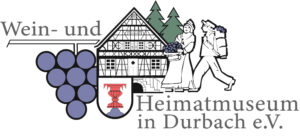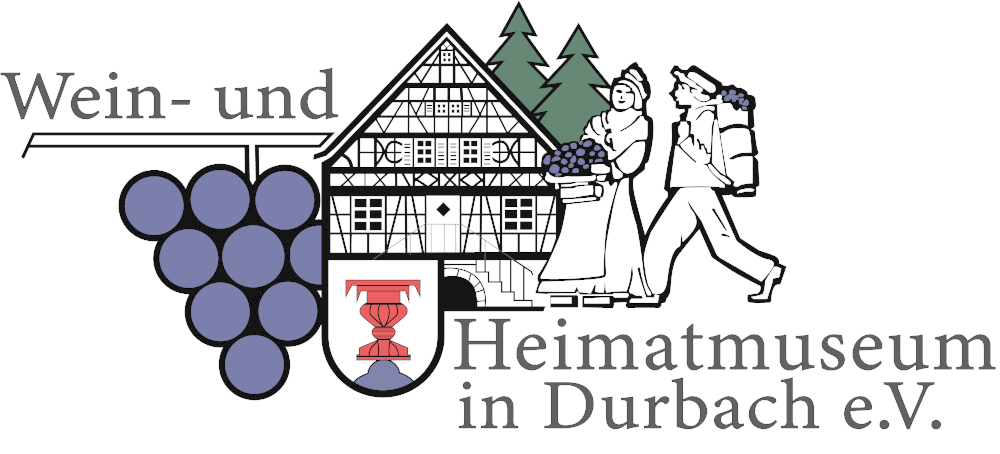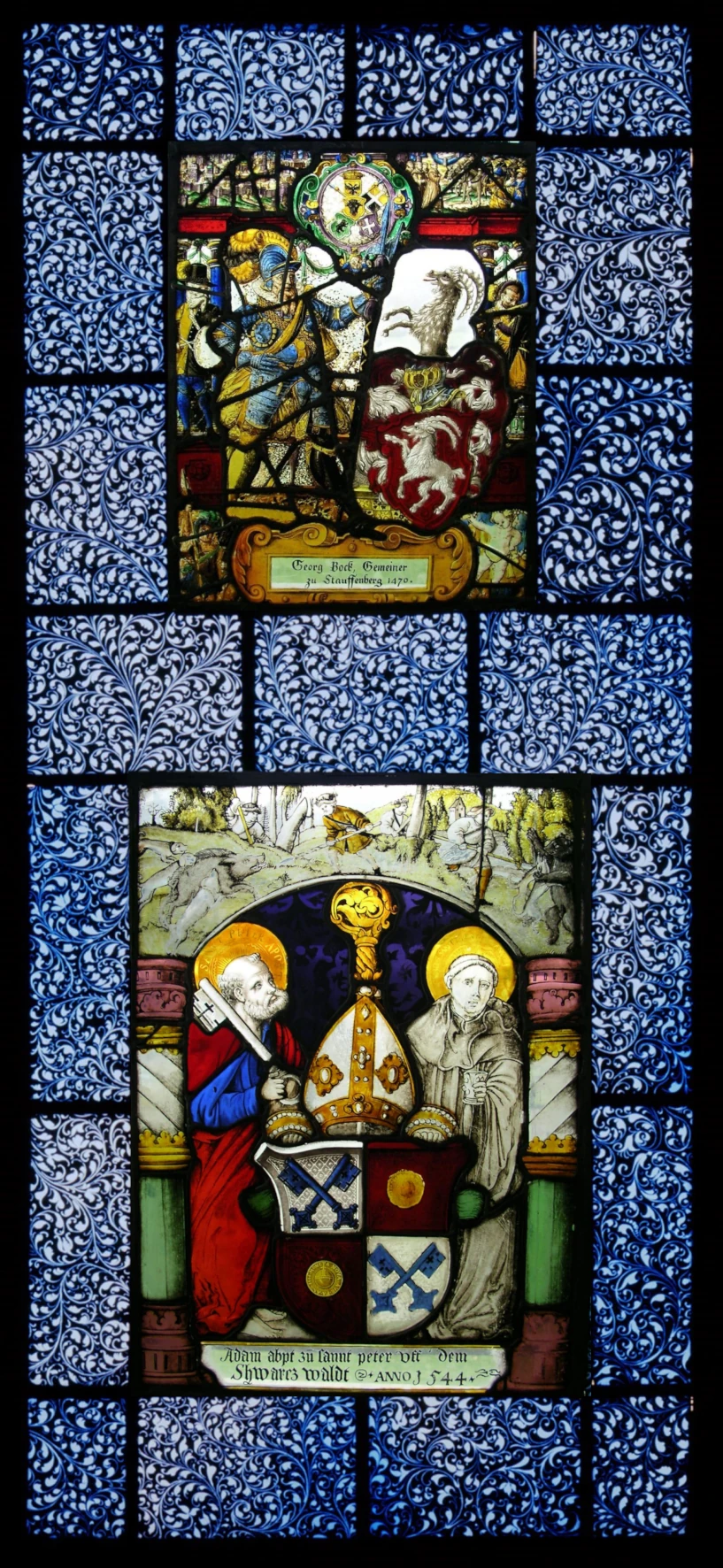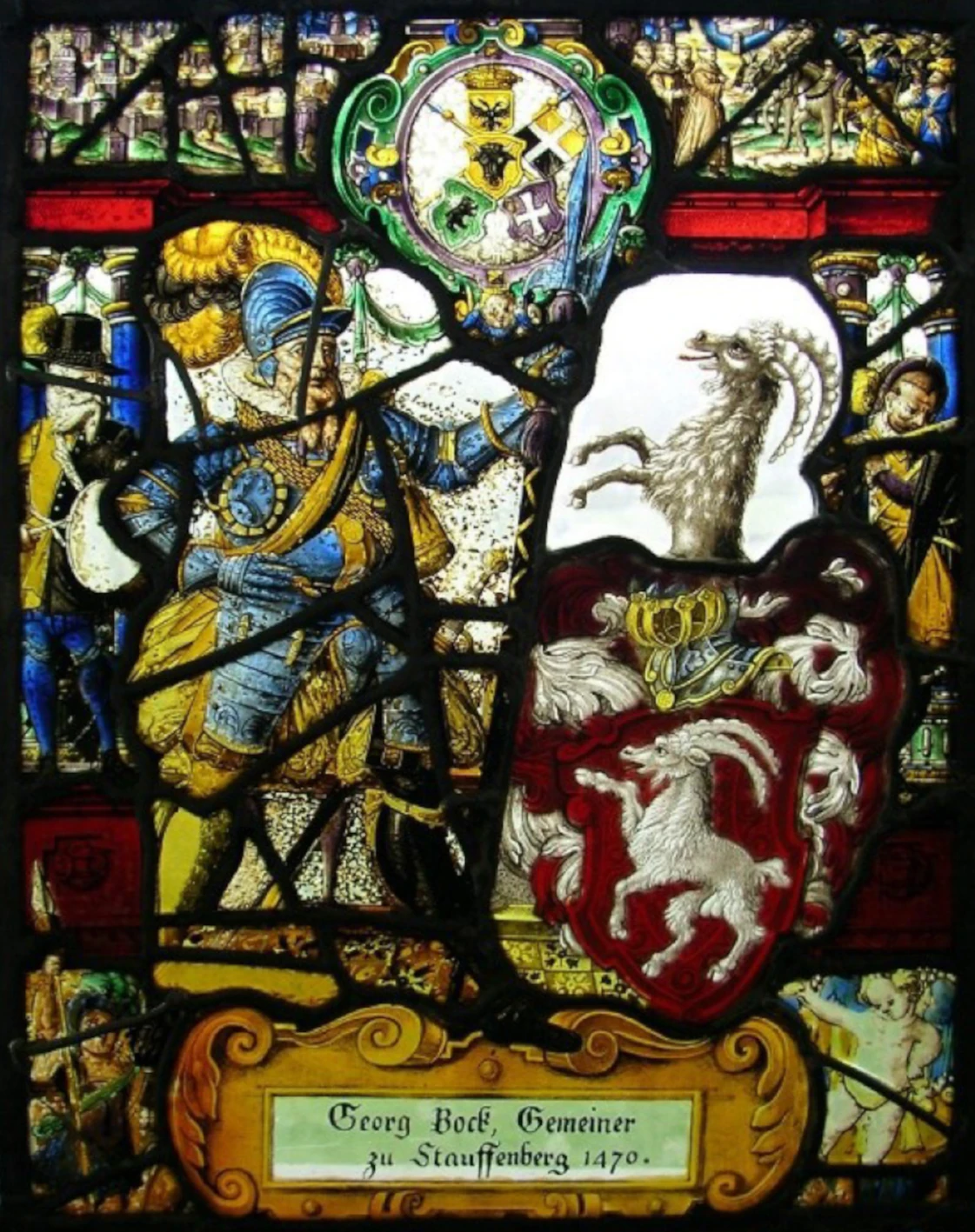267 Staufenberg Castle Window 7
Motif above: The families living in Staufenberg bore the Staufenberg coat of arms. Headpiece coat of arms: Imperial eagle, canton of Uri and three other coats of arms, reception of armed horsemen by Franciscans. Inscription: “Georg Bock, Gemeiner zu Stauffenberg 1470”
Motif below:Adam Guldin was abbot of St Peter’s Abbey from 1531 to 1544. He died in 1544. St Peter and St Benedict hold the shield with keys and gold guilders. Head piece: Sow and bear hunting. Inscription: “Adam abpt zu sannt peter uff dem Schwarcz waldt ANNO 1544″
Motif above: The disc probably originated in the early 17th century, but was altered at a later date with the heraldic animal of the Bock von Staufenberg and the inscription together with the two putti for Staufenberg purposes. Georg Bock von Staufenberg was married to Elsa von Bach from Offenburg, who was unfaithful to him and is said to have poisoned him in 1479. Despite an embarrassing interrogation in her new home in Winterthur, at the instigation of her Staufenberg relatives, she insisted on her innocence.
It depicts an armoured warrior with a halberd, a drummer and a piper on either side. Above it, in a round cartouche framed by scrollwork, the coat of arms of the original canton of Uri (bull’s head) and the imperial eagle with crown. The other coats of arms (crosses) and the bear in a green field cannot be assigned.
Motif below: Adam Guldin, a native of Freiburg im Breisgau, Sanpetriner Professe, was unanimously elected successor to the deceased Abbot Jodok by the prior and convent on 11 October 1531; proclamation in the diocese on 3 November 1531, confirmation on 8 December.
Guldin is said to have been the first abbot of St Peter’s to be invited to the Swabian Imperial Circle. He had a pointed oval wax seal (7 x 4 cm) dated 7 October 1536, a figure seated in an architectural structure, holding a pair of keys in his left hand, his right hand raised, below a quartered shield with two crossed keys, apple; inscription AD… (MONASTERII S(ANCTI) PETRI IN SILUA NIGRA
The early daissance disc depicts: St Peter and St Benedict holding the shield with the keys in a silver field and each holding a gold guilder with the inscription: MONETA NOVA AVR . FA . ANO . 1544 in rotem Felde. Early Renaissance columns bear the flat arch, with bear and sow hunting in the headpiece. The disc refers to Basel’s work.




